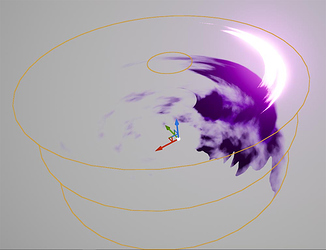I think this image from @Niels explains the layering:
I’m thinking you should be able to get the same result even when using ribbons if you seed them?
3 different meshes in that example, all using the same material but with different instances and different settings.
